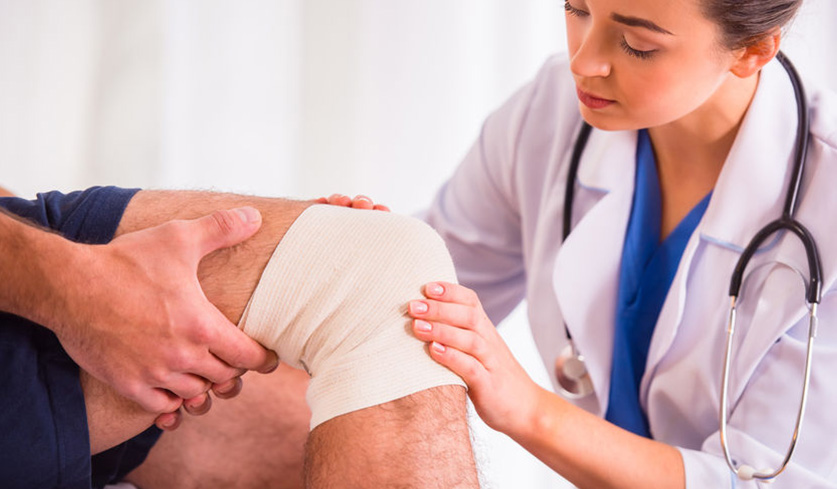
On-Demand
Orthopedics CME
Purchase Now!
$297
Advance your knowledge of Orthopedics on everything from concussion management to spine assessment.
Package 1 – Fixing Pains & Taking Names: A Roadmap for Physical Exam of Common MSK Injuries

CME Courses by Sarah Bolander, DMSC, PA-C, DFAAPA
Gain the Upper Hand for Evaluating Conditions from the Wrist to the Digits
Hand conditions can make activities of daily living particularly challenging. A thorough history and physical exam will narrow down your differential and guide the need for imaging. Specialized exam techniques will be demonstrated, and initial management options reviewed. Many of these conditions respond well to conservative treatment when recognized early.
I Spy: Basics of Skeletal Radiology and Fracture Identification
Can you spy the fracture line, or do you wait on the radiology report? Interpreting skeletal radiology may be daunting, but this skill allows providers to correlate imaging findings with a clinical exam to identify even subtle fractures. This interactive session will offer the essential tools needed to identify and describe fracture findings from plain radiographs appropriately.
Name-That-Fracture: Eponyms and Other Named Injuries
What is in a name? Eponymous fractures allow for rapid, succinct identification of complex injuries. Unfortunately, these named injuries are often mistermed, which can create confusion and misdirect management. Commonly named injuries of the upper and lower extremities will be clarified, and the language of orthopaedics will be further discussed.
Kids Can Run, But They Can’t Hide a Limp: Atraumatic Lower Extremity Conditions
Confounded by that pesky skin rash? What to do with that skin infection? This session will give you the most up-to-date, evidence-based guidelines for the treatment of common skin conditions. We will review therapeutic classes of topical and systemic medications, treatment parameters, monitoring guidelines, and patient teaching pearls. You’ll leave this session feeling confident and prepared to treat the most challenging dermatologic conditions.
This Is… Ortho Jeopardy!
Play along as we review orthopedic topics from the day and introduce a few more. This interactive opportunity will allow you to put your knowledge to the test. Categories will include clinical presentation, mechanism of injury, specialized physical exam techniques, imaging, and management of common musculoskeletal complaints.

CME Courses by Gerald Weniger, PhD, ATC, PA-C
Not Just Child’s Play: A Review of Pediatric Orthopedics
Most clinicians are familiar with common pediatric injuries. But are you still confused by the Salter-Harris classification? Do you remember the differences between a slipped capital femoral epiphysis and Legg-Calve-Perthes disease? This presentation will review these pediatric musculoskeletal conditions as well as osteochondritis dissecans, apophysitis, various fracture patterns, and more.
Don’t Shoulder the Burden: Demystifying Physical Exam of the Shoulder
Many clinicians are comfortable with the evaluation of musculoskeletal conditions of the hand, wrist, foot, or ankle. But for some reason, evaluation of shoulder pain is often more daunting. SLAP tears? Hawkins-Kennedy Test? Bankart tears? O’Brien’s Test? This presentation will help you make sense of all the orthopedic acronyms and eponyms so that you can more confidently evaluate a patient with shoulder pain. Useful special tests will be explained and demonstrated.
We’ll Give You a Hand: Wrist & Hand Pathologies You May Be Missing
What is the difference between a cream and a lotion? In the first half of this two-part talk, we will review common dermatologic drugs, vehicles and their uses. In the second half of the talk, we will discuss drug reactions ranging from the serious Toxic Epidermal Necrosis and Steven Johnson Syndrome to the benign. This lecture will demystify common medication culprits that cause drug reactions as well as initial labs to elucidate severe from self-limited drug rashes.
Keys to the Knee: Simplifying Evaluation of the Knee
Evaluation of the knee has changed and evolved over the years. Do you perform a Lachman’s test or anterior drawer? Is McMurray’s test still clinically useful? What is a Thessaly test? This presentation will discuss these special tests and more; while making sense of a musculoskeletal exam of the knee. Special attention will be directed towards acute and degenerative meniscus tears, and when referral to orthopedics is prudent.
Get a Leg Up on Musculoskeletal Pharmacology (Rx=0.50)
Are you running out of options for treating joint and muscle pain? Have NSAIDS and acetaminophen stopped working? Ready to lessen your use of opioids? This presentation will review alternative medications for MSK pain. It will also provide an introduction to joint injections such as hyaluronic acid injections, platelet-rich plasma therapy, and other emerging procedures.